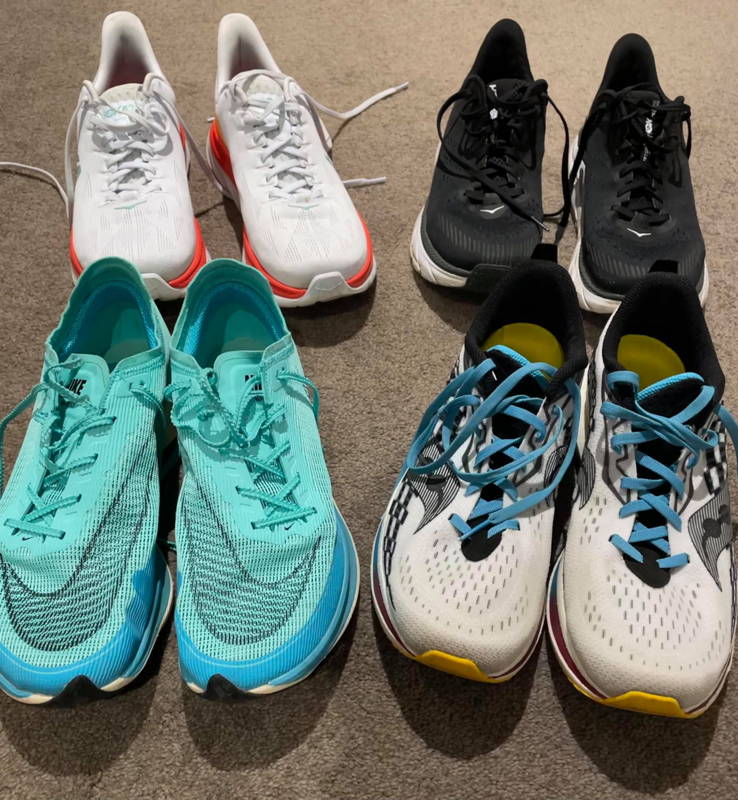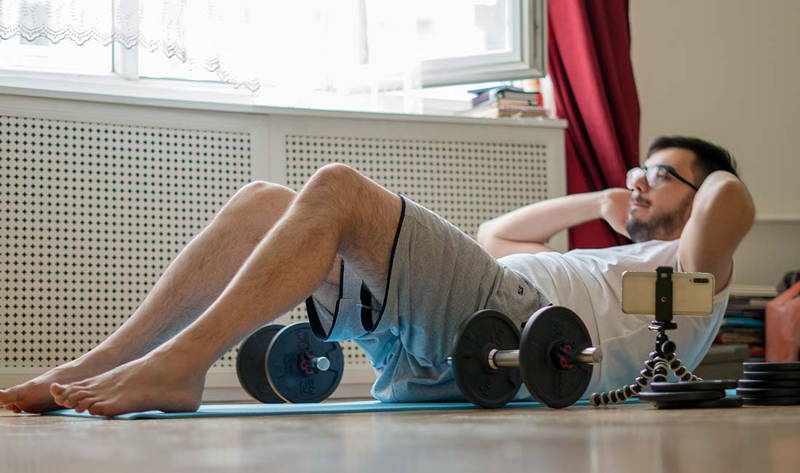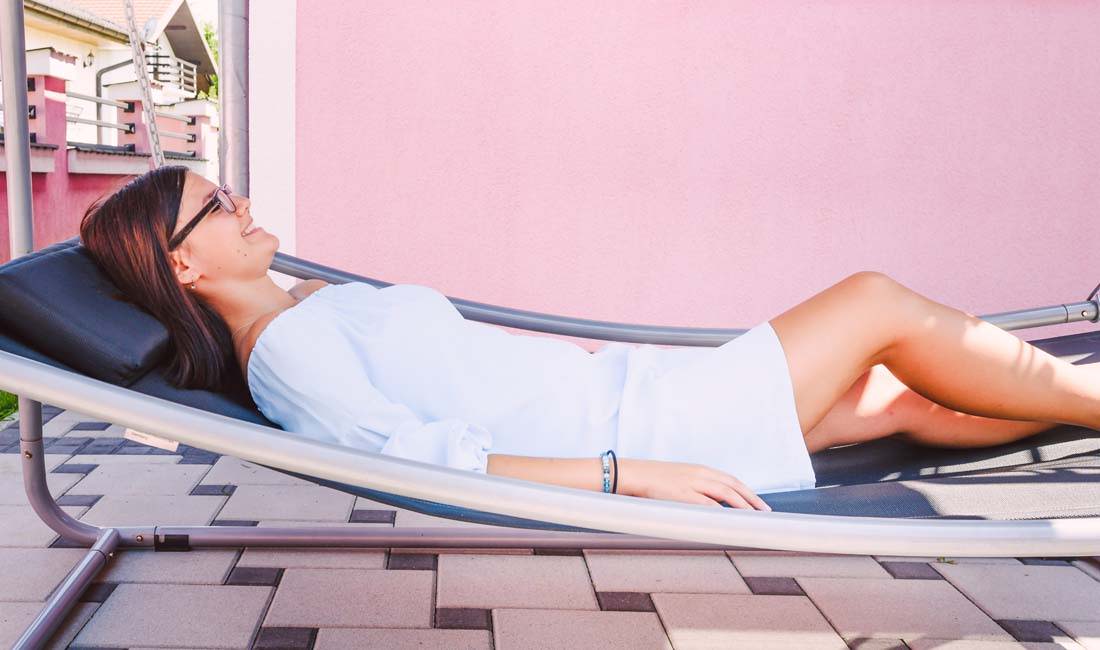work out at your pace
Working Out from Home
Covid-19 pandemic modify greatly our lifestyle, specially working arrangements. Till this day many business are still offering working from home flexibilities. We are fortunate to live in a time of online classes, tutorials, fitness Apps, blogs and Youtube channels. But before you start a workout routine at home, it is key to ensure you have the right gear. Having activity specific footwear is crucial to your performance and enjoyment. You cannot go running a 5k in your Archie’s and you shouldn’t be lifting weights in your Hoka One Ones. There are reasons shoes are designed for specific exercises, and usually they are pretty logical. The majority of us are simply wanting to keep active and enjoy some fresh air while working from home so below there is a few questions and recommendations you need to consider when getting ready to exercise.
When was the last time you updated your workout shoes?
Unfortunately, as high tech as they are, runners don’t last forever. The foam that makes up the midsole of your shoe and feels so good underfoot is bearing the brunt of your run. Repetitively. Often on concrete. For km after km. Eventually it wears down and can no longer bounce back. If they are feeling flat, they are no longer protecting your body from the force and you are at risk of injury. This is why we recommend updating your shoe on average every 600-800km.
When we run we displace 5-12 times our body weight through our feet. Running shoes are designed to protect our bodies from the full force of this impact. But in doing this, they compress. Rebound time for foam can be up to 48 hours. If you run a lot we recommend you have a few pairs you can rotate through. This ensures longevity of the shoe, protects you from injury and in the long run will give you more bang (or kilometres) for your buck. Learn about shoe rotation here.

Is your shoe right for your activity?
As much as we love running, we understand that not everyone shares our enthusiasm. Which is why we make sure we offer a wide range of styles to support all activities. Below, we explain the basics of the type of recommended shoes according to your activity.
Weight lifting: flat shoes for stability. The lower your centre of gravity the more stable you are. Do not wear your full volume running shoes with ultra-plush soles and extra arch support. If you lose your balance and roll off the side whilst holding heavy weights… you can imagine what comes next.
Classes; eg HIIT, Body Attack, Boxing, Routines: Something light weight that won’t restrict movement. Some cushioning is good, but again not as much as your full volume running shoes. We recommend looking at something with increased lateral (side) stability if you are doing exercises that have you moving side to side. This is to protect your ankles from rolling.
Beginner Runner: If you are looking to get into running you should look for a comfortable, cushioned full volume runner. By this we mean avoid anything that is advertised as lightweight or race as this is something you would progress to once you have conditioned your body to the repetitive movements and increased strain.
Advanced runner: Alternate between full volume and a lighter weight runner depending on your distance. If you are training for an event, ensure you have added your event day runners into your rotation 4-6 weeks before an event.
More detailed info here: How to get your shoes race ready.
Pro runner: Lightweight and race runners such as a carbon plate model for better propulsion. Chances are though – if you are a professional runner you have worn your fair share of runners in your time. So let us know when you’re ready for a fresh pair!
You could have a running shoe that doubles as your workout shoe – many of us do. We understand that it is not always realistic to have a different pair of shoes for every exercise. The important things are that you listen to your body, you take notice of the niggles and pains and you act early. You’ve heard the old saying “no pain no gain”. We don’t subscribe to that. Pain isn’t always “normal”. Pain is there for a reason; it tells you when something is wrong. Learn how to pick up a workout shoe here.
Do not go too hard or too fast
If you are new to running it is important to not go too hard or too fast. We understand the temptation to compensate on the lost gym classes and sport games with extra runs. But you need to build up your distances and intensity slowly to ensure you are conditioning your body and giving it time to adapt. But you are in luck! Not only are we big running nerds and love nothing more than taking the time to talk to you about every little facet of shoes and running… But there are MILLIONS of free resources out there to help you go from spud to stud with your running game. Below are some of our favourites health apps and resources:

Running
Strava (ap)
28 by Sam Wood (ap)
C25K (Couch to 5k, great for beginners)
Garmin Connect (ap)
Nike Run Club (ap)
Map My Run (ap)
Yoga & Pilates
Yoga with Adriene (YouTube)
Boho Beautiful (YouTube)
Blogilates
Workouts
28 by Sam Wood (ap)
Centr (free 6 week)
Freeletics
Nike Training Club
Keep it Cleaner
Have a rest and let your body recover
The exercise routine you are following can do your body a lot of good. It lead to muscle growth, fat loss, improved insulin sensitivity, reduced inflammation, better cardiovascular health, and overall healthier bodies. But you need to give your body time for those good changes to happen before you start stressing it out again.
Everyone will need to factor a different amount of recovery days into their fitness routine based on how long and how intense their workout are, you will need a day or two in any week for rest and recovery. The harder and longer your workouts, the more time you will need to recover between them. Rest days can range from pure do-nothing days called Passive Recovery: A complete cessation from exercise, passive recovery is synonymous with complete rest. Or, Active Recovery, which means low-intensity, generally low-impact exercise that promotes blood flow and tissue repair without further stressing the body. For instance, you can try a gentle yoga practice to stretch out tired muscles. Think of active recovery as anything you can do without getting winded or fatiguing your muscles.





Cold weather running
How to choose a Workout Shoe